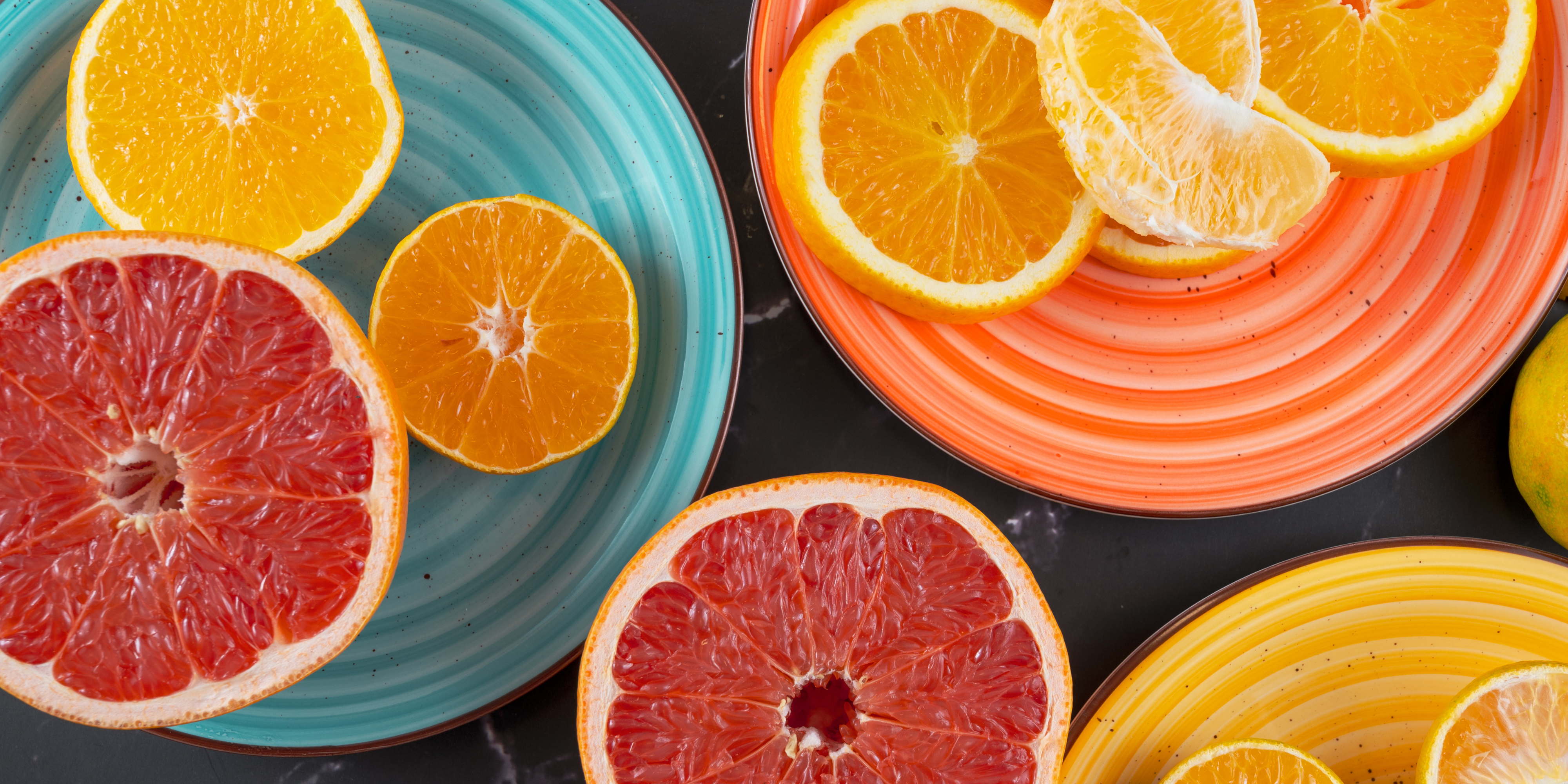
Cultivating Citrus
A Staple in the Home Garden
Lemons, Mandarins, Oranges, Limes, Grapefruit & MORE
Citrus are one of the favourite fruit plants in Whanganui, for small and large gardens as well as container production with eventual tree size being controlled by the use of dwarfing rootstocks. The most popular citrus grown in Whanganui are lemons and mandarins. Though all the others are grown too. Here in Whanganui we have a climate that grows good citrus. Most citrus trees are subtropical or tropical and will tolerate temperatures to around -2 C. Trees are fairly slow growing with a mature specimen taking 15-20 years to reach 4-5 metres. Where the location is sheltered from wind and warmer, the trees will grow and mature faster.
Citrus trees will generally try and produce fruit from the first year, but at this stage the trees ability to bring fruit to maturity is often questionable. A good practice is to remove flowers and fruit for 2-3 years to allow a strong branch framework to establish. In subsequent years if the tree is still producing larger crops than it can sustain the removal of approximately 1/3 of the crop will ensure the tree does not get into a pattern of biennial bearing. This is where the tree switches between a year of no fruit or low fruit numbers and a year of heavy fruit production.
For more detail on this practice, see our Disbudding Citrus video here.
To be grown successfully most citrus trees are grafted onto a rootstock. This plays a major part in determining the ultimate height the variety will grow, as well as having an effect on the hardiness of the tree. There are two main rootstocks used in New Zealand – ‘Trifoliata’ and ‘Flying Dragon’.
- ‘Trifoliata’ is the most widely used, it is vigorous allowing the tree to grow to 4 or 5 metres in 15 years. It is also tolerant of heavy and wetter soils and creates increased frost hardiness. When grown in pots the trees tend to dwarf themselves to the size of the pots and can be successfully maintained at 1-2m and produce well for many years.
- ‘Flying Dragon’ is a dwarfing rootstock, well-suited for growing compact citrus trees in limited spaces, usually to a height of 1.5-2m. Citrus grown on ‘Flying Dragon’ rootstocks are the best for healthy growing long term in pots and containers. This rootstock usually promotes earlier fruiting than other types, as well as tolerance to cooler climates and resistance to common citrus diseases.
‘Meyer’ lemons and also ‘Bearss’ (Tahitian) limes can be successfully grown on their own roots. These such plants are particularly suited to pots and small gardens as the plant vigour is less than that of a grafted tree of the same type. They still fruit prolifically from a young age, the plants just don’t grow as big.
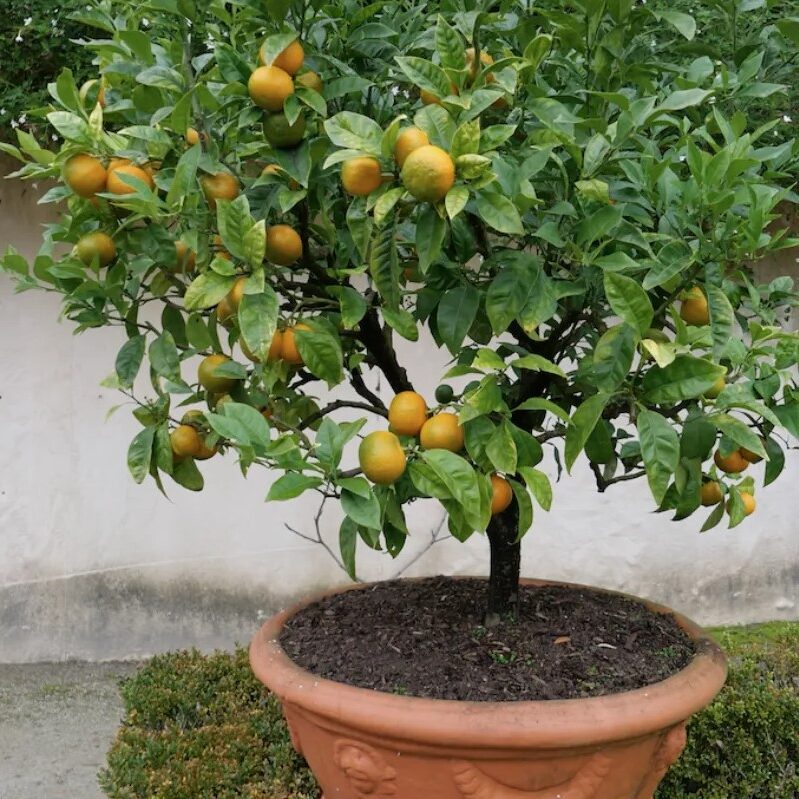
Feeding Citrus Trees
Citrus are gross feeders and thrive in good soil with regular feeding of a specialised granular citrus fertiliser like ‘Ican Citrus & Fruit Food’ as well as ‘Ican Liquid Citrus Food’. Plants which are showing yellowing of the foliage should in addition be given a top up of magnesium – ‘Tui Epsom Salts’ or ‘Yates Liquid Citrus Cure’ which is a plant tonic of zinc and manganese. ‘Yates Iron Chelate’ is available as a treatment for iron deficiency, characterised by the yellowing of the leaf with green veining remaining.
Where soils are lighter and sandy, particularly in parts of Springvale, Gonville & Castlecliff an extra dose of ‘Yates Liquid Citrus Cure’ or ‘Tui Epsom Salts’ is recommended on a more frequent basis. In lighter soils particularly, an application of mulch around the base of the tree at the start of each summer will also be of benefit in conserving soil moisture & helping retain nutrients.
See below, an example of healthy, dark green foliage, compared to deficiencies of magnesium & iron, respectively.
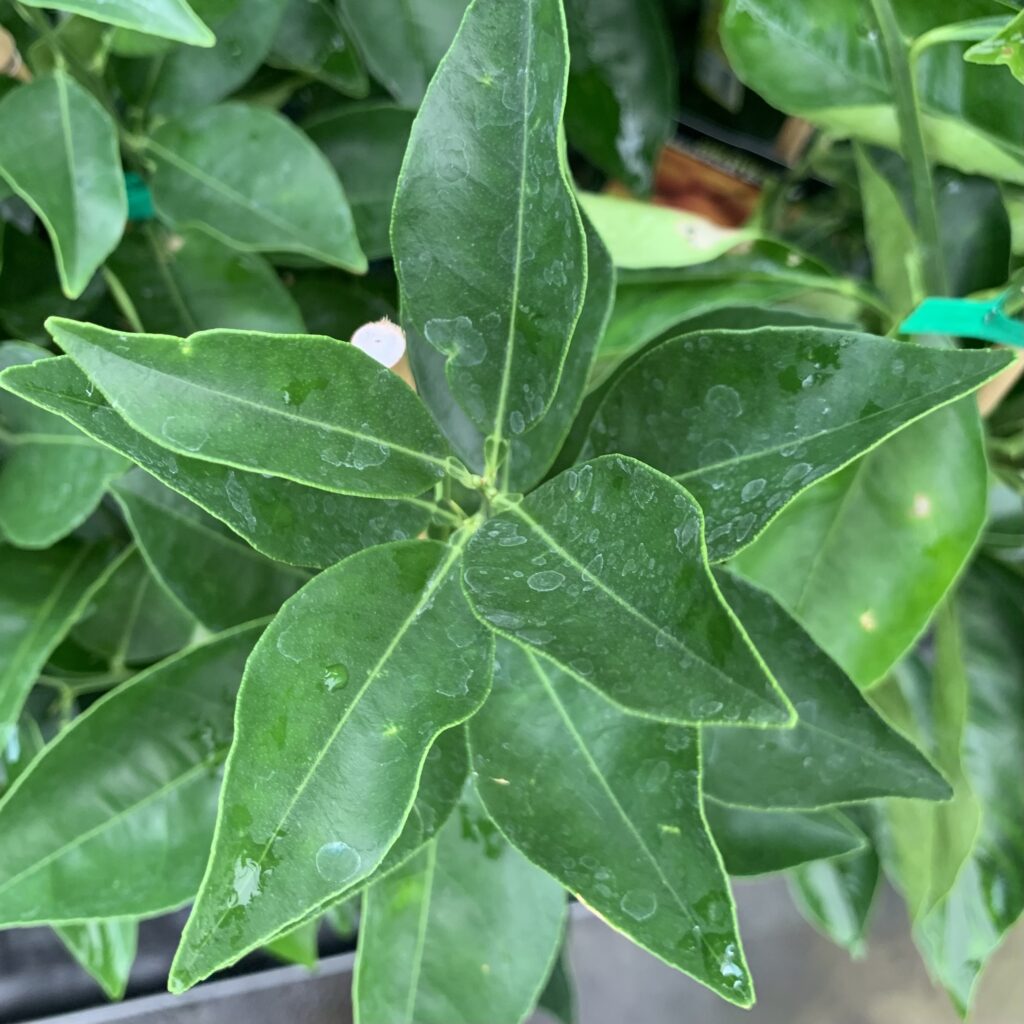
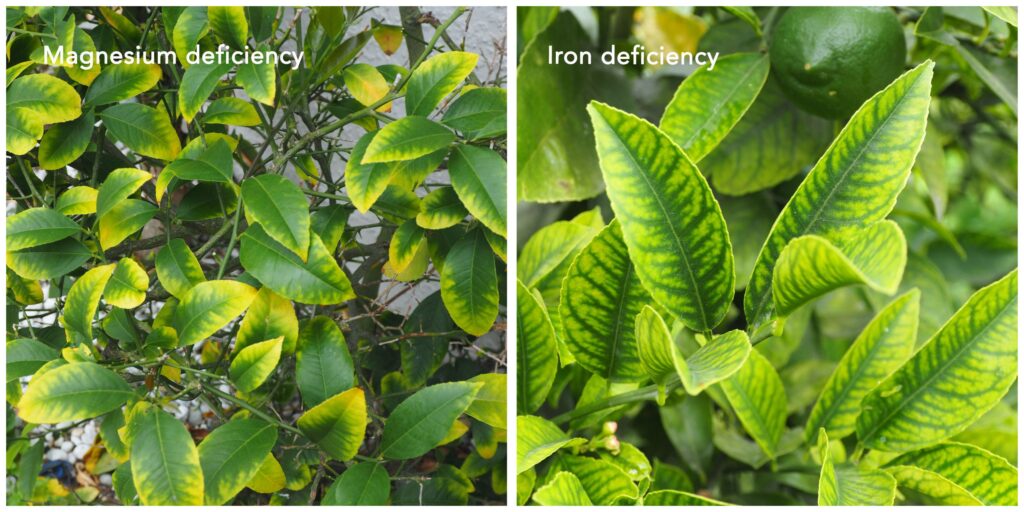
For pots and containers we recommend to fertilise regularly using a specialist citrus fertiliser. A couple of suitable choices for pots and containers are ‘Burnet’s Gold Citrus and Fruit’, or ‘Ican Fruit Food for Pots’.
The addition of Saturaid re-wetting granules each summer to established citrus growing in containers is highly recommended. This product should be applied annually, it channels water to the root zone where it is needed most. It promotes even water distribution so there is less water run off and dry spots in potting mix and soils. It makes watering, rainfall and fertilisers more effective. It can also be used in the garden even in sandy, clay or compacted soils.
When growing citrus in pots and containers it is important to use a “top of the line” potting mix such as ‘Ican Premium Potting Mix’ or ‘Tui Pot Power’. ‘Ican Premium’ is our favourite – a nutrient-rich, bark-based mix with plenty of pumice allows for the absorption of moisture as well as optimal drainage and air flow. The use of a cheap and low quality potting mix will really doom your efforts to failure as these are normally very silty and compact down around the roots, suffocating them.
A long, hot summer when trees are well watered will result in better fruit production, followed by the cooler months which promotes the change in skin colour of the fruit from green to yellow. When the summer is cooler the crop yield, size or quality tend to suffer.
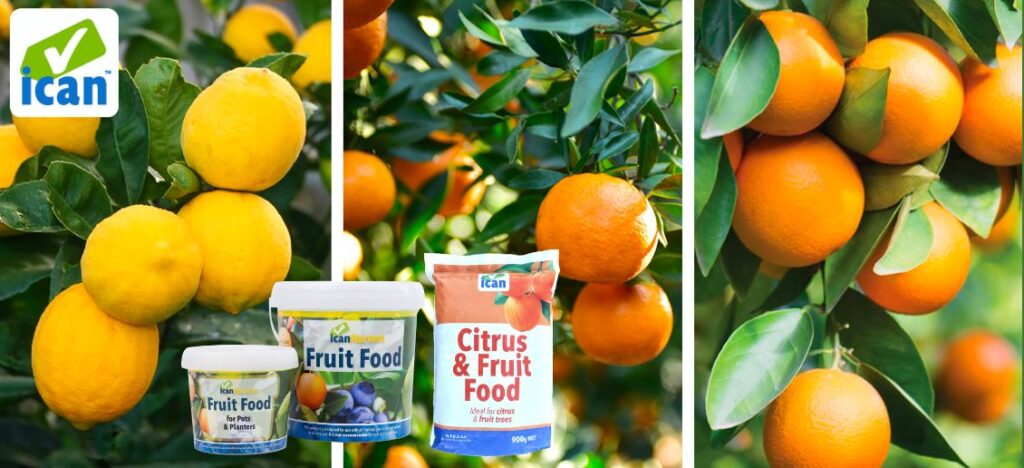
Pruning
Pruning is only required for shaping and plants are better left untrimmed from a fruit yield perspective. Any shoots from the rootstock should be removed as this will reduce vigour from the tree and subsequent fruiting potential.
Pruning is best completed in early spring before October when the borer beetle starts to lay its eggs. The tell tale sign of a borer attack is sawdust piles on and around the plant from holes in the stems/trunk where the beetles are active. This can be controlled with the use of ‘No Borer Spray Injector’ into the holes. They can be difficult to control so prevention is better than trying to fix later.
Pests
The most common problem with citrus is usually sooty mould – a black, sticky substance on the leaves and stems. This is actually a secondary problem caused by the presence of particularly scale and other insects which while sucking the goodness from the tree secrete a sugary substance upon which the mould grows. The sugary substance is also attractive to ants.
The good news is this is easily controlled with a spray of a suitable insecticide such as ‘Yates Mavrik’ mixed with the addition of ‘Grosafe Enspray 99’ to give maximum effect. If you are unsure then take some sample leaves into a garden centre for advice.
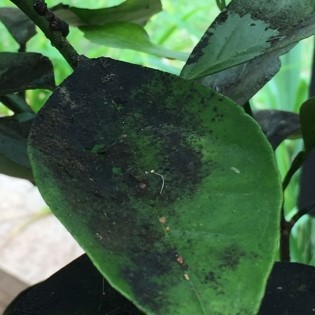
Some more unusual citrus to look out for;
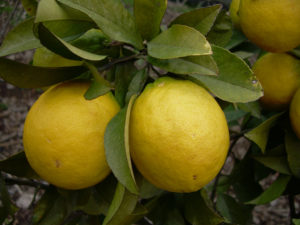
Tangor ‘Kiyomi‘; For something different try this hybrid citrus fruit – it’s a cross between a mandarin and Orange. It has large fruit like an orange, with the easy peel of a mandarin. It’s very juicy, thick-skinned and seedless when self pollinated.
Lemon ‘Lemonade‘; A very juicy, lemon-like fruit with a mild, refreshing grapefruit-like flavour. Fruit can be eaten fresh or juiced. Fruit has a very strong scent. A heavy cropper.

Orange ‘Cara Cara’; This sweet & juicy, high quality orange is a sport of Washington Navel but with the potential of deep pink flesh in hotter weather. Fruits ripen from late winter and hang well on the tree.
Some of the favourites;
Lime ‘Bearss’; A hardier selection of Tahitian lime with small, thin skinned, deep green seedless fruit which turns lime-yellow at maturity. Protect from frost. Tree habit is vigorous and spreading.
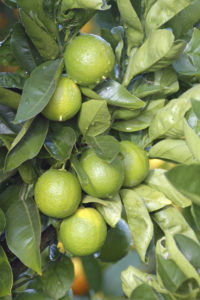
Orange ‘Harwood Late’; NZ selection of Valencia orange bred for our climate. Sweet, juicy, thin skinned fruit, ripens throughout the summer. Excellent eating or juicing. A reliable cropper.
Mandarin satsuma ‘Miho‘; Do you love those big seedless, mandarins with the soft, puffy, easy to peel skin? Then plant a mandarin ‘Miho’. This is an early ripening Satsuma variety that has thin skinned, easy peel, sweet juicy fruit with segments that easily separate. This variety grows well in cooler areas.
